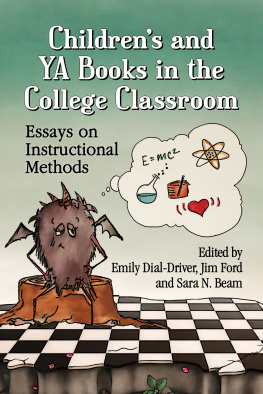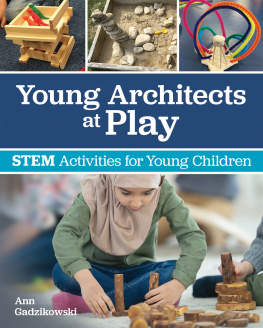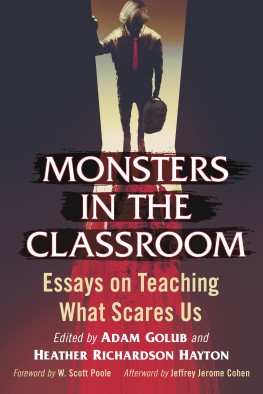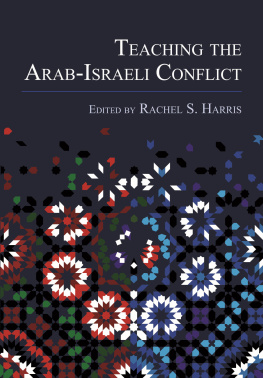
ALSO OF INTEREST
Fantasy Media in the Classroom:
Essays on Teaching with Film, Television, Literature,
Graphic Novels and Video Games, edited by
Emily Dial-Driver, Sally Emmons and Jim Ford (McFarland, 2012)
The Truth of Buffy: Essays on Fiction Illuminating Reality,
edited by Emily Dial-Driver, Sally Emmons-Featherston,
Jim Ford and Carolyn Anne Taylor (McFarland, 2008)
Childrens and YA Books in the College Classroom
Essays on Instructional Methods
Edited by
Emily Dial-Driver,
Jim Ford and Sara N. Beam

McFarland & Company, Inc., Publishers
Jefferson, North Carolina
LIBRARY OF CONGRESS CATALOGUING DATA ARE AVAILABLE
BRITISH LIBRARY CATALOGUING DATA ARE AVAILABLE
e-ISBN: 978-1-4766-2115-9
2015 Emily Dial-Driver, Jim Ford and Sara N. Beam.
All rights reserved
No part of this book may be reproduced or transmitted in any form or by any means, electronic or mechanical, including photocopying or recording, or by any information storage and retrieval system, without permission in writing from the publisher.
Front cover image: An illustration from the student project Unmonsterly Matilda, a handmade book by Kristen Cleary, Gretchen Eagle Chaffin, Hannah Hanley, Francyne Melberg and Melody Davis
McFarland & Company, Inc., Publishers
Box 611, Jefferson, North Carolina 28640
www.mcfarlandpub.com
Preface
Emily Dial-Driver
Happenstance and serendipity can lead us to many good outcomes.
Happenstance, an event that occurs, can cause tragedies, make connections possible, or cause, as Longfellow asserts, those two ships to pass in the night with no lights on board. Serendipity, which may be a happier event than happenstance, is accidental, but accidental in a way that leads to a good end.
Both of those words apply to the genesis of this book.
Happenstance. This occurred when I was left with a colleague, a silent colleague, awaiting a meeting. One might sit quietly and meditate in the company of a silent colleague. I, however, can chatter. So I did, and I happened to mention that I had read a childrens book to one of my classes, a real childrens book: The Paper Bag Princess (Munsch).
Dr. Silent raised an eyebrow and asked what class I had read to. I answered, Composition I.
That answer resulted in what could be written as Hummph and a dismissal by Dr. Silent who simply walked off to the water fountain. I was chagrined. Then came serendipity. Saddenedand, to be honest, a bit worried about the way my methods might be viewedI told what had happened to another colleague who said, I use works for children in my class.
Our discussion centered on her use of The Little Red Hen in her nursing class and on my use in creative writing classes of lines from Thurbers The Wonderful O and The White Deer to illustrate word choice and use, as well as my use of what pretends to be a childrens book, The Pedant and the Shuffly: A Fable (Billairs and Fitschen), in revealing how one cannot judge the worth of a book by its childish appearance.
Then theres Wonder, the story of a boy with facial deformities told by multiple narrators. It fulfills the definition of a work worth reading on its own terms, with literary elements (remember those multiple narrators), careful use of words and rhetorical devices, and thematic material. In Wonder everyone is an Other to others and the overarching ethical model is that one should be kind. In addition, disabilities/differences studies have always been and are currently growing in importance. And, its good. Really. Good. Knowing all that, that there is value in the pursuit, that we are not alone, the quest began.
I began to seek out those who were secretive about the methods they used in teaching concepts that included childrens works. It turns out that many college educators use literature written for children or young adults in their classes. Its like a silent secret, however, and not a silent secret society because the whole thing is generally not publicized to other educators. I suppose the hiding is out of fear that, as Dr. Silent reacted, the pedagogical methods might be dissed by others.
And, as I discovered and continue to discover, the methods are innovative and interesting and, most important of all, effective.
So, in order to bring the practice into the light, we, the writers of these essays, decided that we would publically admit to our secret and tell others about what we do.
Along the way we enlisted several people to aid us in proofing and fact-checking and all those other important tasks: Jessica Limke, Aubrey Nagy, Bryce Briner, Mary Mackie, Jessica Robinette, Shanna Harrison, Briana Kelley, and Abby Wraight.
We, editors and contributors alike, hope that, by revealing our secret methods, we might invite others to join the society we hope will no longer be silent. We hope that others enjoy and celebrate the engaging, rewarding, useful, and beneficial pedagogical practice of teaching adult-level concepts and conventions and developing critical thinking, academic, and intellectual skills with the help of literature for young, sometimes very young, people.
It makes life interesting. I hope you find our discoveries so.
Works Cited
Bellairs, John, and Marilyn Fitschen. The Pedant and the Shuffly. New York: Macmillan, 1968. Print.
Longfellow, Henry Wadsworth. The Theologians Tale: Elizabeth. Tales of a Wayside Inn. 1863. Boston: Houghton Mifflin, 1880. Google Books. Web. 1 Oct. 2014.
Munsch, Robert (writer), and Michael Martchenko (illus.). The Paper Bag Princess. Toronto: Annick, 1992. Print.
Palacio, R. J. Wonder. New York: Knopf, 2012. Print.
Thurber, James. The White Deer. 1945 New York: Harcourt, 1973. Print.
_____. The Wonderful O. Ill. Marc Simont. New York: Simon & Schuster, 1957. Print.
Introduction
Jim Ford
It all starts with Harry Potter, so they say. The Boy Who Lived, the publishing phenomenon, the orphan wizard whose annual experiences at Hogwarts are so much better than any actual school yearHarry Potter is the paradigmatic case of the power of young adult literature.
It starts well before that, of course, as evidenced by the following pages, with fairy tales, Golden Books, myths and legends, stories of all kinds that charm and intrigue readers of all ages. But the Harry Potter series is crucial to so many students experience with and expectations of books, and the realization that college literature can be as compelling, intriguing, and enjoyable as Harry Potter highlights the possibilities for using childrens and young adult literature in the college classroom.
Young adult literaturethe best of it, anywayoffers a number of advantages as educational material. First, such works often meet students where they are, resonating with a young adults experiences and outlook. The reading level of young adult works can be much more manageable, particularly for college freshmen who may be working their way up to traditional college literature. These stories have their depth and significance, which can be revealed using traditional literary techniques of analysis and reflection. It is easier to teach students how to use those techniques when the object is something the students already understand at a basic level. Most importantly, these are works that students genuinely enjoy, a crucial reminder that reading should be a pleasurable activity. Great stories are worth reading, wherever one may find them.
Next page








